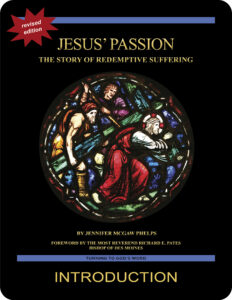First Letter of Paul to the Corinthians
 The First Letter of Paul to the Corinthians 13:4–8 (NABRE) contains Paul’s familiar description of love that is heard at weddings around the world.The passage begins with a Greek word for love, ἀγάπη (agape), followed by a number of different verbs, laying out a list of characteristics of love that show what the Christian life is meant to look like—love in action.
The First Letter of Paul to the Corinthians 13:4–8 (NABRE) contains Paul’s familiar description of love that is heard at weddings around the world.The passage begins with a Greek word for love, ἀγάπη (agape), followed by a number of different verbs, laying out a list of characteristics of love that show what the Christian life is meant to look like—love in action.
There’s a significant grammatical difference between the Greek in this passage and the English translation, and this difference has a noticeable impact on the meaning. In the English translation, the statements Paul makes about love fall into a consistent grammatical structure that begins with a noun (love), contains a linking verb (is), and concludes with one of a number of different predicate adjectives (patient, kind, etc.). The implied result of this grammatical structure is that the passage describes a state of being that comprises love.
While the structure used in the English translation also is possible in Greek, the Greek passage uses a different grammatical structure consisting of two parts, a subject (love) and an intransitive verb. An intransitive verb is an action that doesn’t have a direct object. “I lie,” “I sleep,” and “I sit” are a few examples of structure using intransitive verbs. There unfortunately are no English equivalents for the intransitive verbs used in the First Letter of Paul to the Corinthians 13:4–8 (NABRE), so offering a better translation is not possible.
It’s important, however, for the reader to keep in mind that Paul’s list is not a list of different attributes that can be assigned to love but rather a list of actions that love performs. Paul, then, understands love as a matter of action and not of something that is passively possessed.
related topics: agape; First Letter of John; mercy; philia & agape; you are my friends
you also may like our free Lenten study of Jesus’ Passion (digital only)
 Jesus’ Passion: The Story of Redemptive Suffering is a five-lesson Catholic Bible study offering an in-depth look at the biblical foundations of the movie The Passion of the Christ. This revised study, which has been granted an imprimatur, contains all of the original material of the 2004 edition as well as many new features in an improved, reader-friendly format. Click on the book’s cover to view the introduction. Free digital lessons of Jesus’ Passion: The Story of Redemptive Suffering are available on the website during Lent.
Jesus’ Passion: The Story of Redemptive Suffering is a five-lesson Catholic Bible study offering an in-depth look at the biblical foundations of the movie The Passion of the Christ. This revised study, which has been granted an imprimatur, contains all of the original material of the 2004 edition as well as many new features in an improved, reader-friendly format. Click on the book’s cover to view the introduction. Free digital lessons of Jesus’ Passion: The Story of Redemptive Suffering are available on the website during Lent.
 Click on the picture of the statue of Moses with horns (above) to learn more about Lost in Translation. A new entry is archived each Monday. Contact us to receive Lost in Translation by email every week. You may use any of the contact links on our website to ask Matthew a question.
Click on the picture of the statue of Moses with horns (above) to learn more about Lost in Translation. A new entry is archived each Monday. Contact us to receive Lost in Translation by email every week. You may use any of the contact links on our website to ask Matthew a question.

Leave a Reply
You must be logged in to post a comment.